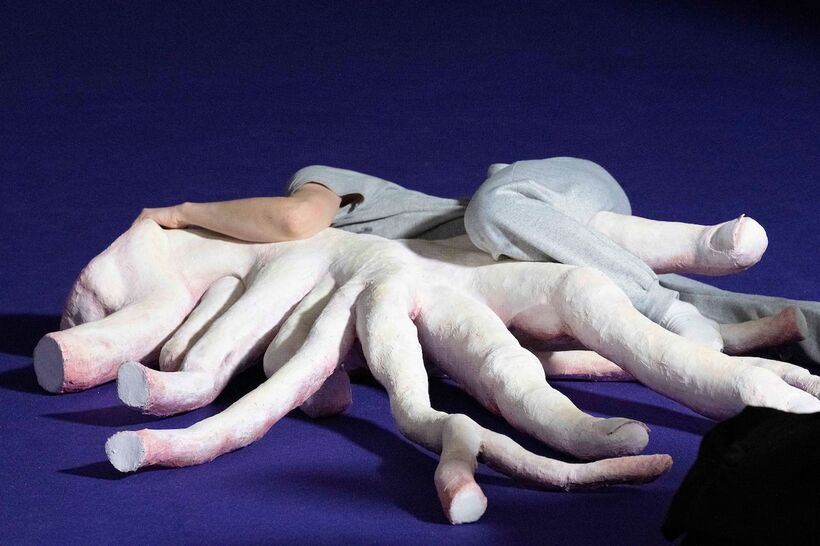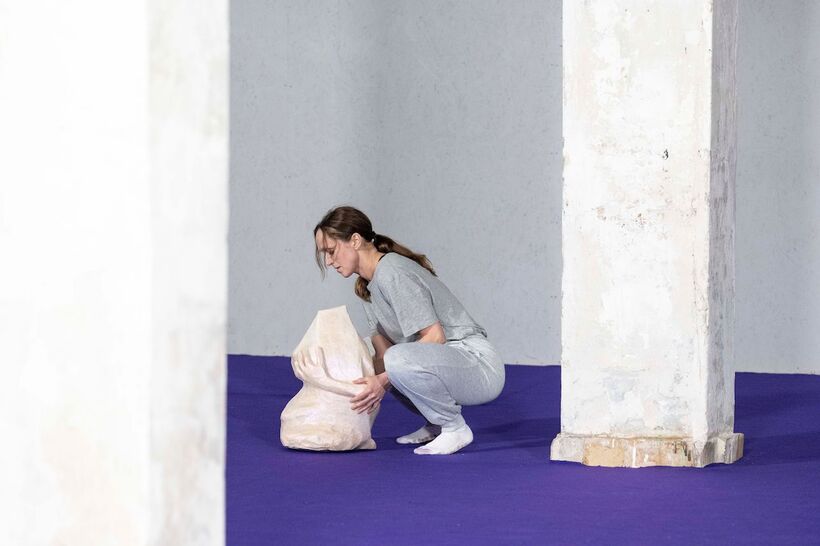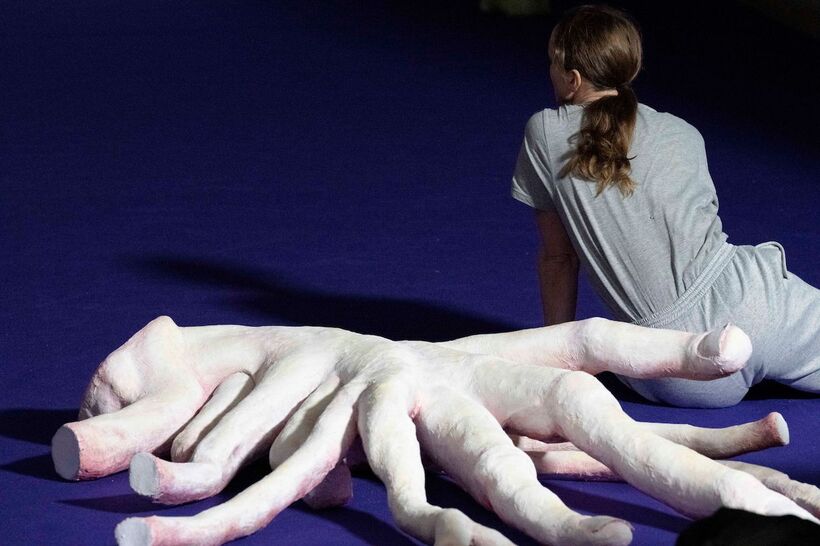Dark Dynamite – A landscape of wonder and hidden pain
Rosalind Goldberg’s world premiere Dark Dynamite at the dance festival Oktoberdans in Bergen, Norway explores the body’s health in adult’s lives. But the experience of the performance left me wondering whether or not it’s more suited for a younger audience.
Rosalind Goldberg is a Swedish choreographer based in Oslo. At the Oslo National Academy of the Arts in Oslo she is currently a research fellow with the Ph.D. project Choreography as a meaning-generating aggregate. The solo dance performance Dark Dynamite is an extension of her research which questions what we can expect from the body and to what extent. It explores the dark forces that drive the body or slow it down: fatigue, restlessness, rootlessness, despair or indefinite aggression. The choreographer points to the idea that life is a self-forming matter beyond our control, in which dark forces are indispensable co-players. She allows this unbridled side of life to unfold.
Before the audience can take a seat, we have to take off our shoes. Probably to protect the vivid purple coloured carpet on which the dancer performs. In the bare, industrial space of Bergen Kjøtt, a former production factory for margarine and meat from 1905, the carpet creates stark contrast to the bright but worn off concrete walls. Five sculptures are scattered around the floor. One of the lumpy objects looks like a Moomin, another evokes fingers intertwined like roots. The dancer Sigrid Hirsch Kopperdal is on the floor. I do not see her at first, as she blends in with one of the installations on the floor. She is laying on her right side and hugging the grey finger-like-installation before she slowly stands up.
Hirsch Kopperdal wears grey sweatpants and a matching T-shirt. Her movements are slow and sometimes almost invisible – or internal. It becomes a big contrast to when she eventually starts to jump, run and bang her body against a wall. Her movements alternate between peace and violence, and in the middle of this, some of the sculptures change colour. Hirsch Kopperdal uses subtle movements and eye contact with the audience occasionally. We also hear her breath and give away small clunking sounds. As though she is in pain, but trying not to show it. It creates a resistance within herself. Arm movements where she stretches them in front of her is done as if she presents pain within the movement. The audience cannot feel the bodily pain she may have, or is channelling.
Although this is the premise on which the choreographer sets for this performance, – bodily pain – Goldberg makes it a bit unclear and almost directionless. Her choice of title for Dark Dynamite creates an expectation of some explosiveness within the choreography to match the title. It is not until after the performance, during an artist talk, that her ideas for the piece become clear. Goldberg has previously shown the solo dance piece The Field during Oktoberdans 2020 – performed by Jens Jeffrey Trinidad – a piece I much enjoyed in the way the piece used elements of salt and circular repetitive movements to create changes in the space and communicated more clearly what Goldberg’s intention was with the work. Dark Dynamite on the other hand communicated to me in a cryptic and childlike way. A toddler an audience member has brought with them reacts to the performance. Surely enough, the toddler is intrigued and entertained.
The ability to play with spontaneity
Suddenly a song resounds from the speakers like a lullaby. It is an acoustic-electronic choir. The words do not make sense, like a gibberish language that reminds of English. It's both entertaining and funny, but unclear if the laughter that spread across the room was intended. During the song Hirsch Kopperdal stands against a wall and sings along with the recorded song, before walking away from the stage and behind the audience. The music has a sudden shift and Black metal music blasts the speakers all of the sudden. I glance over to the toddler again – which seems to not be scared of this sudden change of volume. Hirsch Kopperdal comes back to the stage during the musical shift and shakes her body and runs to the music.
I start to wonder whether or not Dark Dynamite would work for an audience consisting of toddlers (and their parents). There is something childlike about Goldberg’s whimsical universe. Should she seek to perform for children when going forward with this piece? And can a performance meant for adults become a “family show”?
It honestly helped to enjoy the performance once I viewed it as meant for kids. Even though the intent is to explore how the body is a stockpile of dynamite with destructiveness like fatigue lurking beneath the skin. Dark Dynamite had an ability to play with spontaneity in such a way was the strength of this performance. Hirsch Kopperdal’s body movement and rhythm much resembled a child in a playroom. The same goes for her way of exploring the room and sitting down next to a glowing orb to observe it.
The guiding principle for Dark Dynamite has been to explore the dark forces that shape our bodies. Unfortunately, it fails to make this clear. But seeing how the performer kept a toddlers’ attention from start to finish begs the question whether its potential should be meant for them.
Written from the performance on 21 October 2022, Bergen Kjøtt, Bergen, Norway.
Dark Dynamite
Concept and choreography: Rosalind Goldberg
Developed with and performed by: Sigrid Hirsch Kopperdal
Scenography: Tarje Eikanger Gullaksen
Music: Camilla Barratt-Due
Light design: Anton Andersson
Illustration: Tarje Eikanger Gullaksen
Editorial note: This text is written as part of an international writing workshop entitled Playing Dance Writing, which took place at Oktoberdans Festival in Bergen. The workshop was a collaboration between Taneční aktuality and Performing Criticism Globally, kindly supported by EEA Grants.






